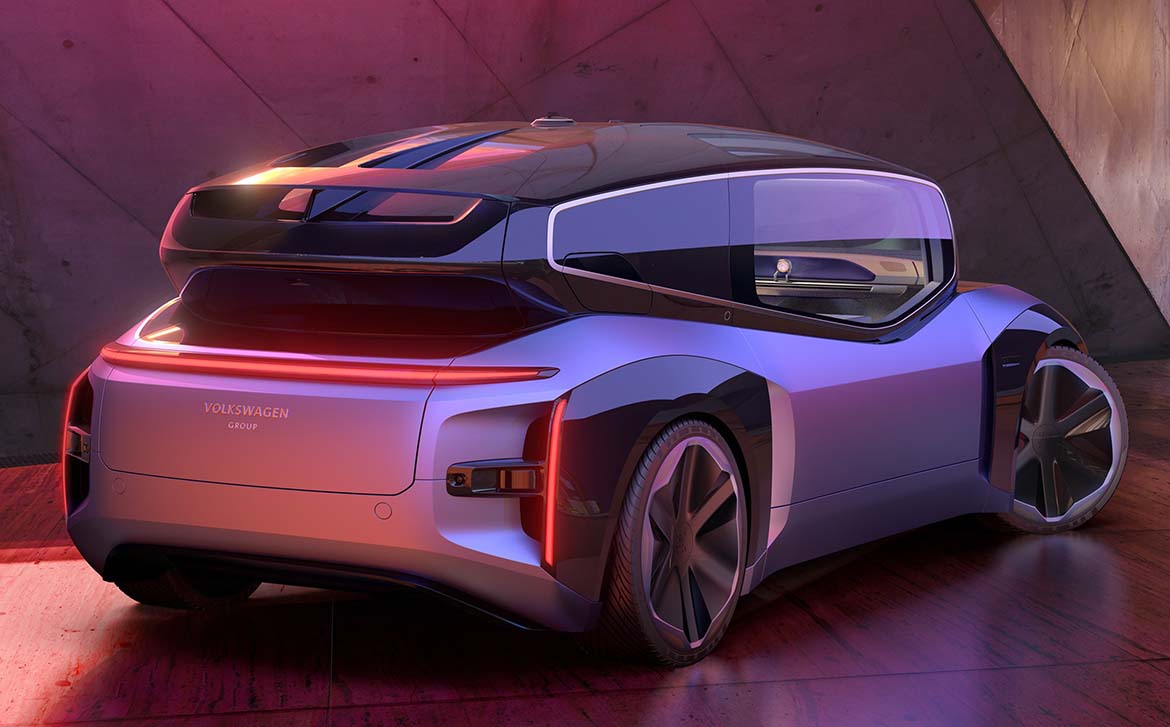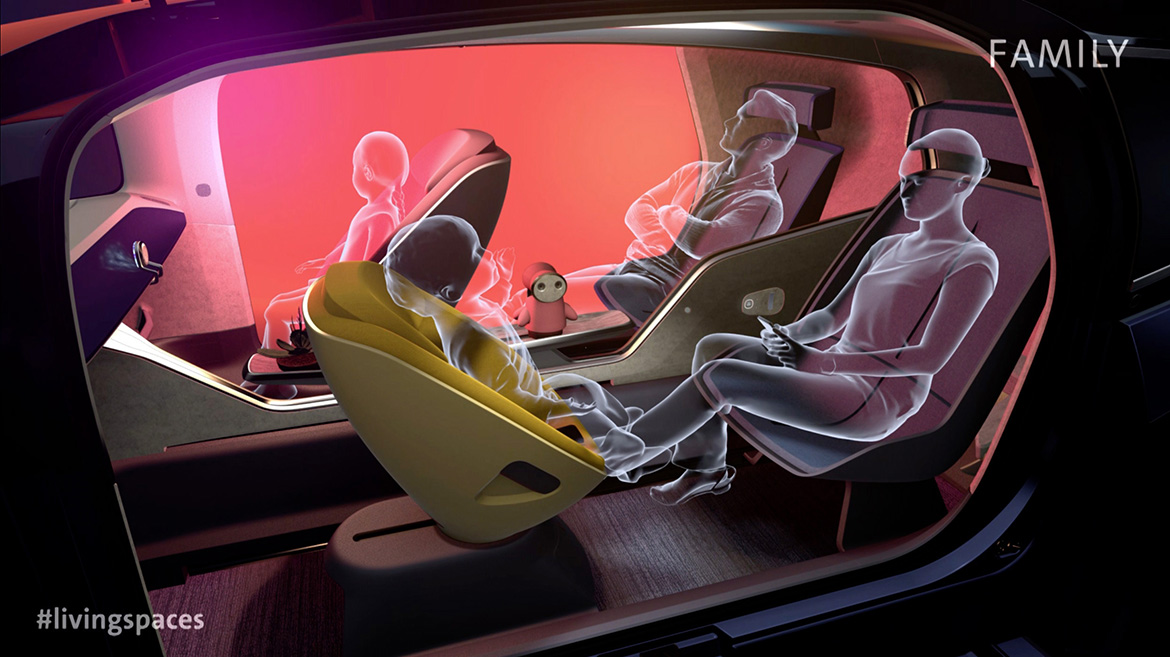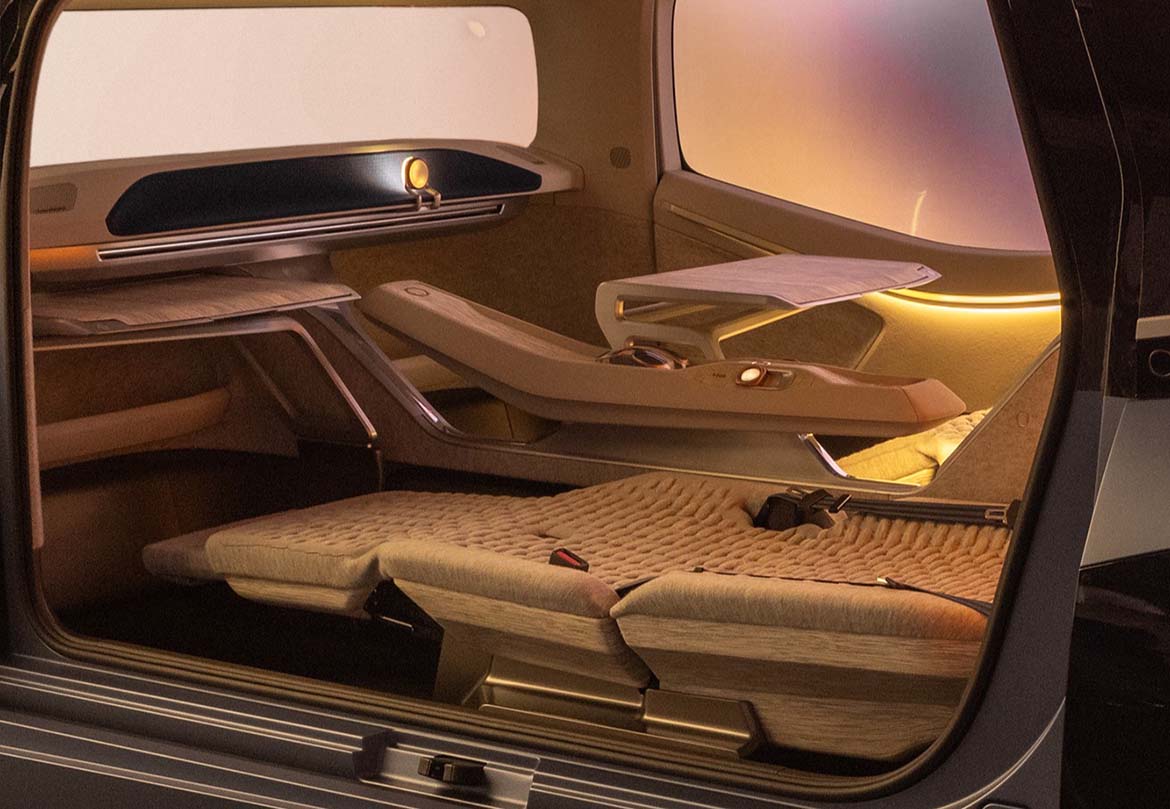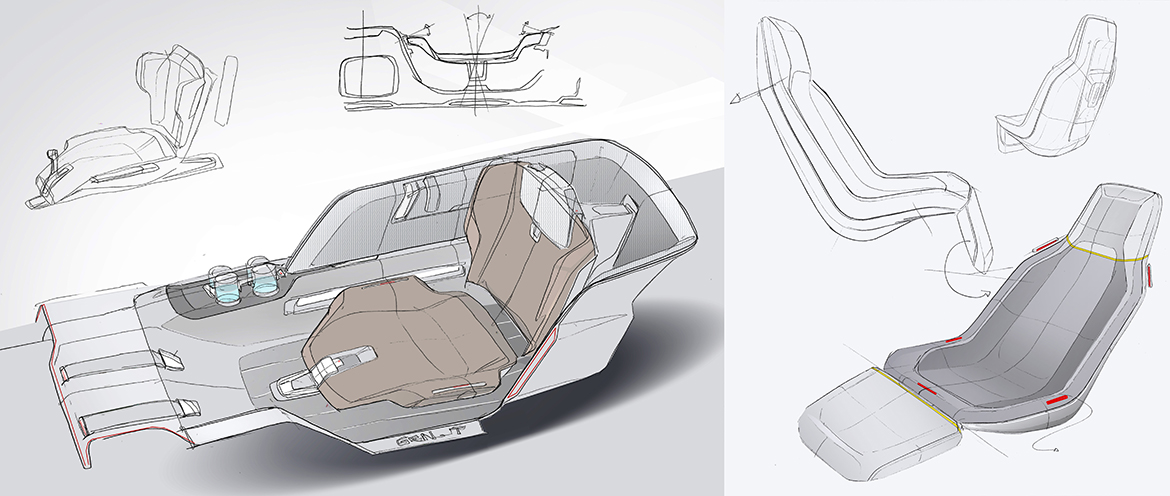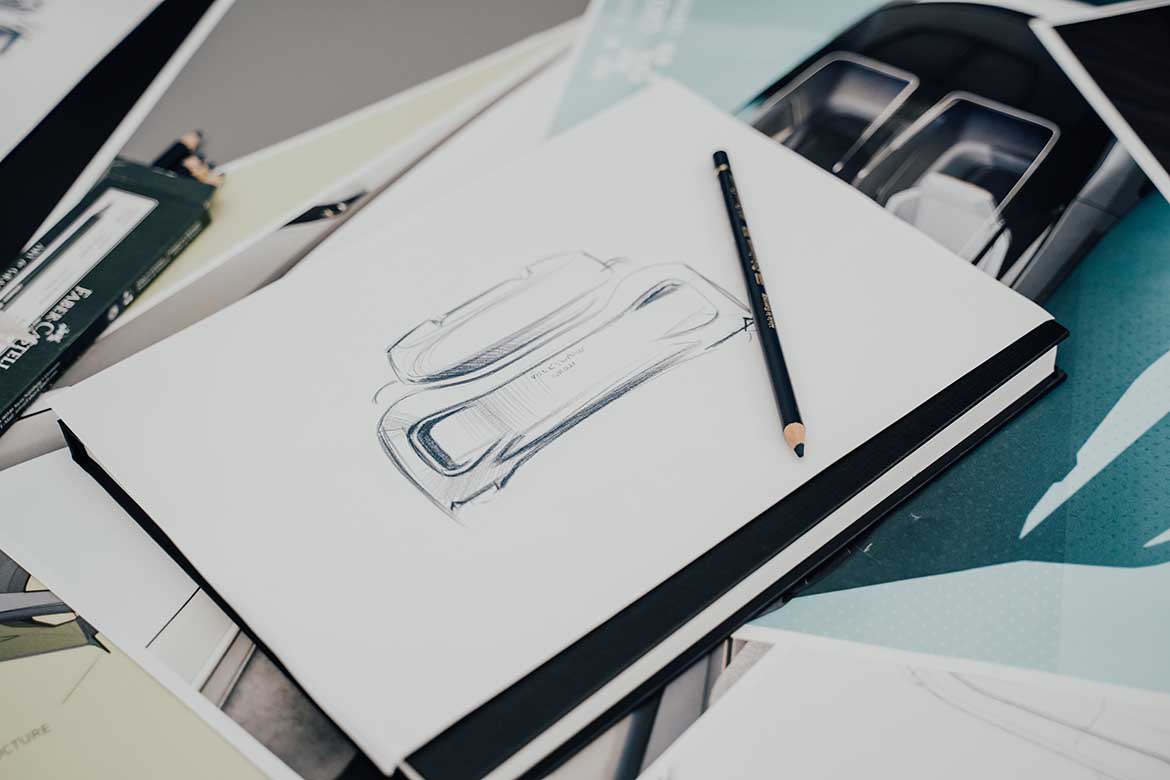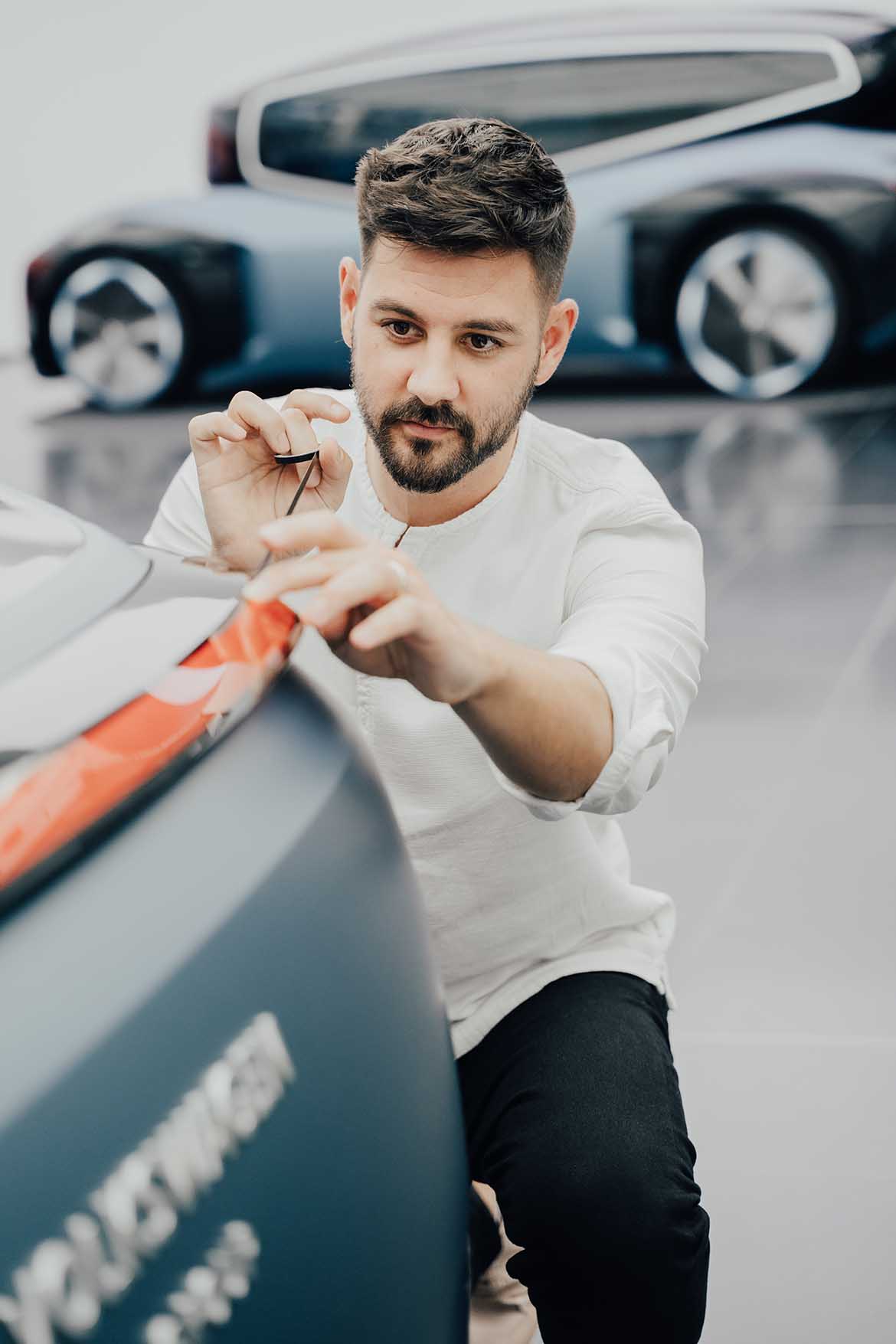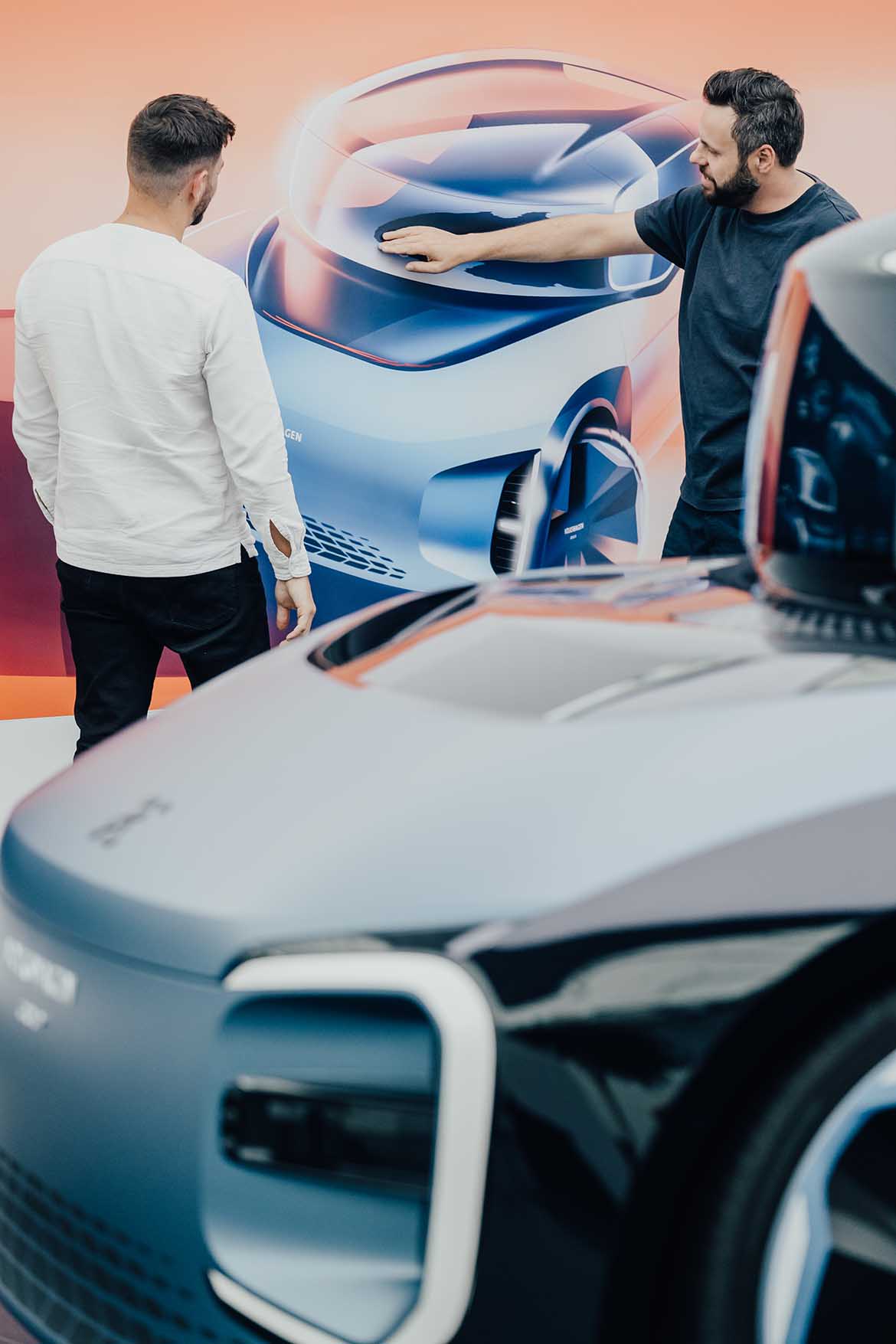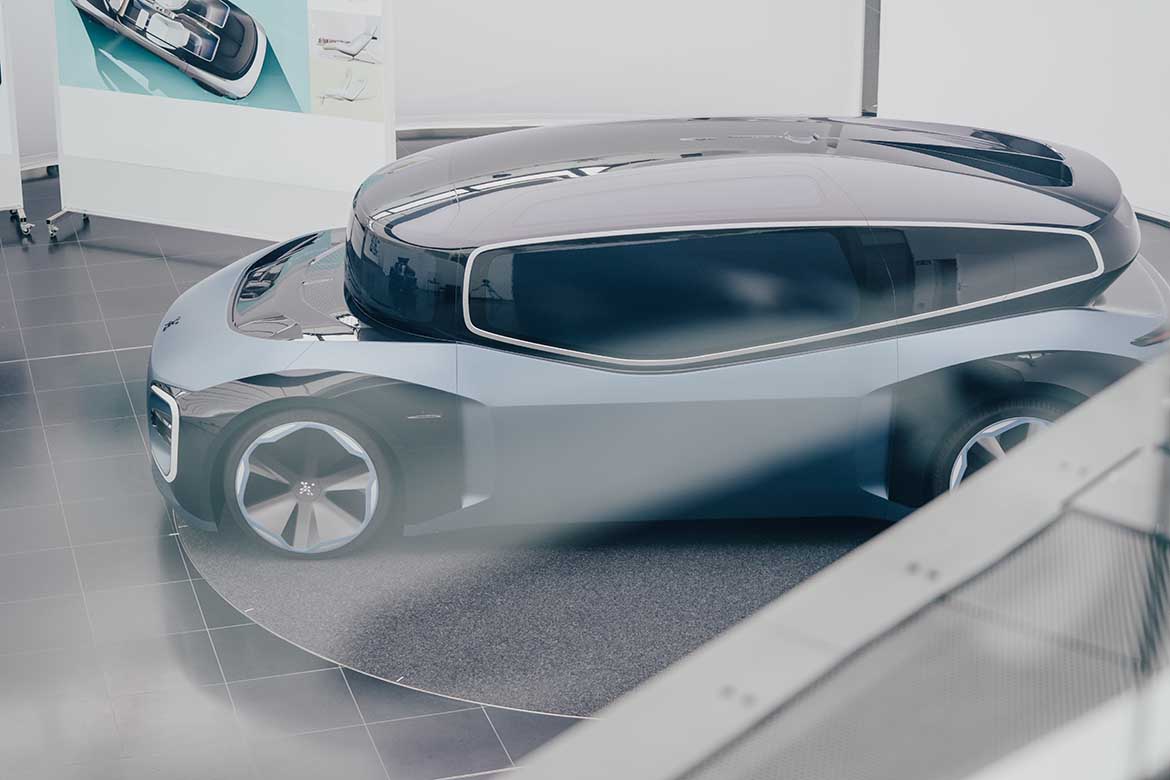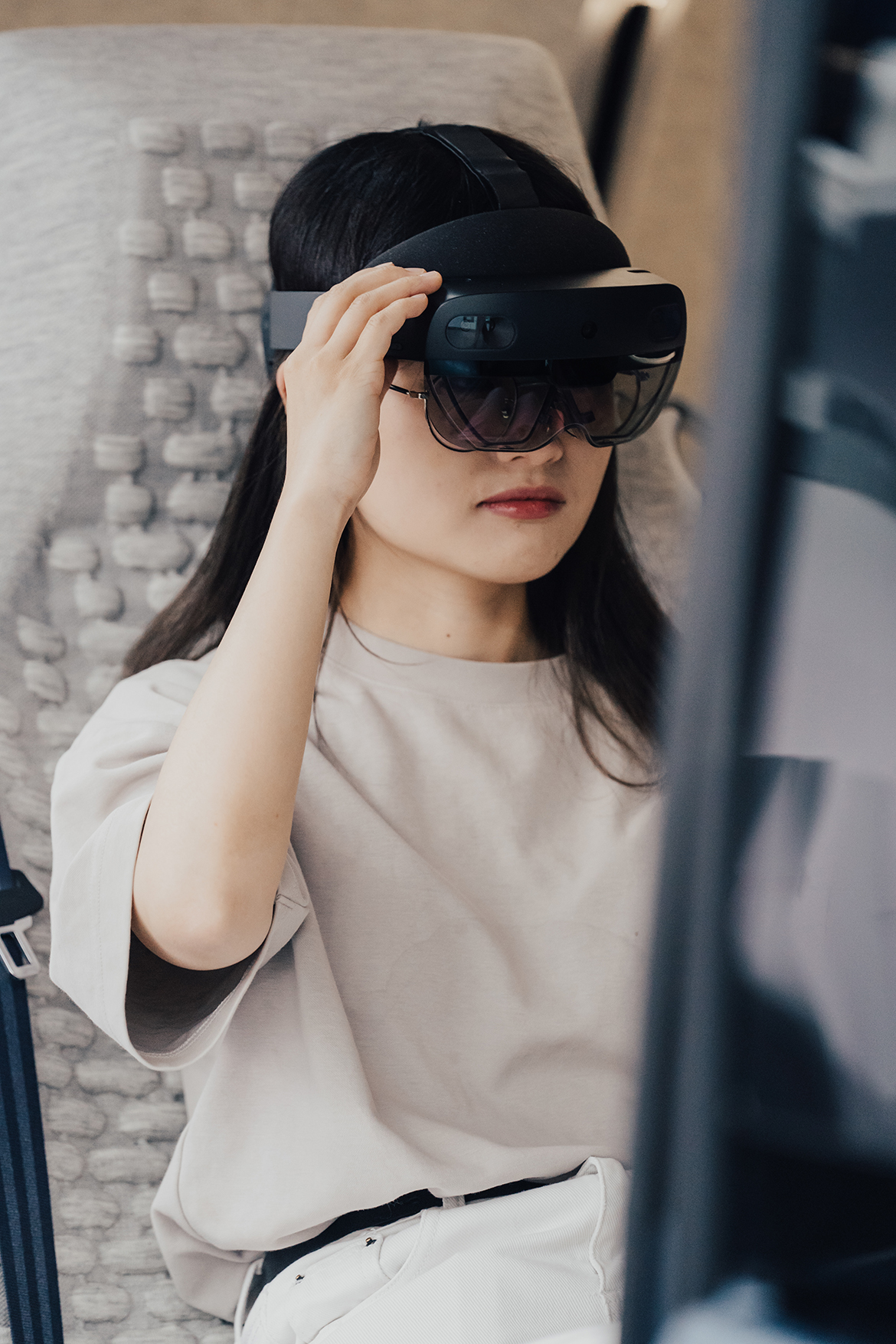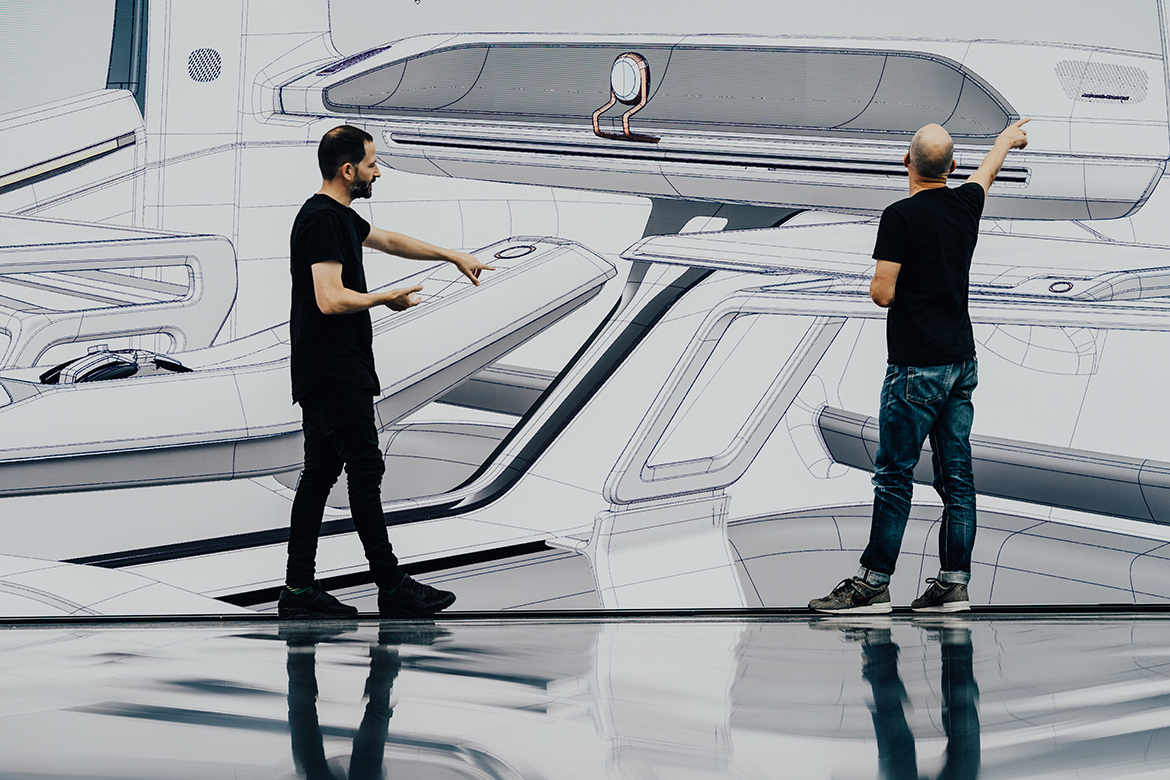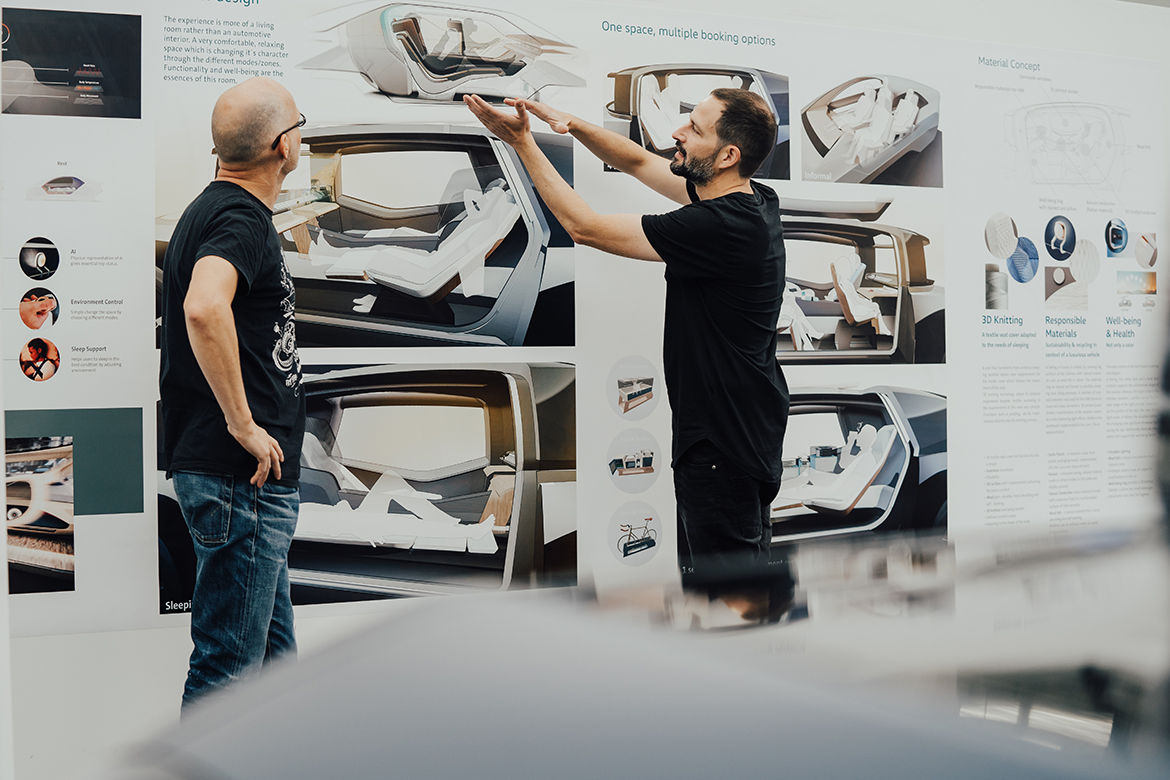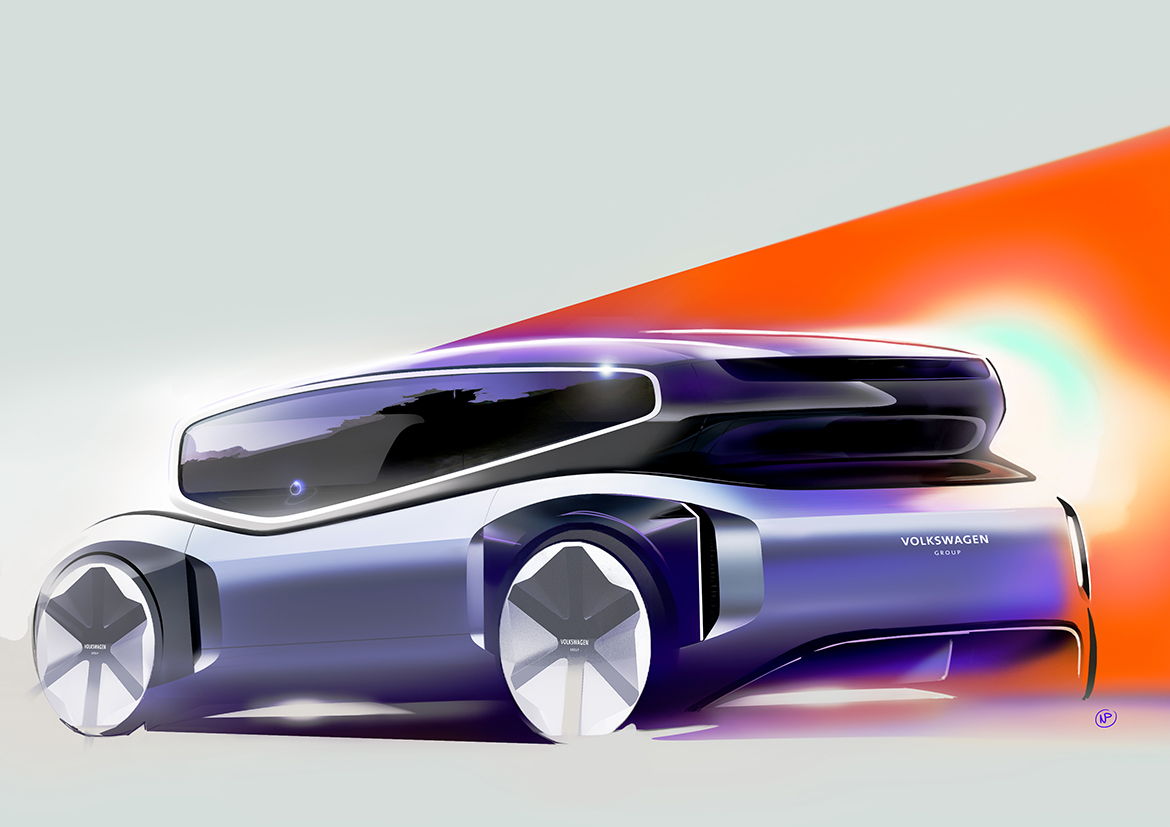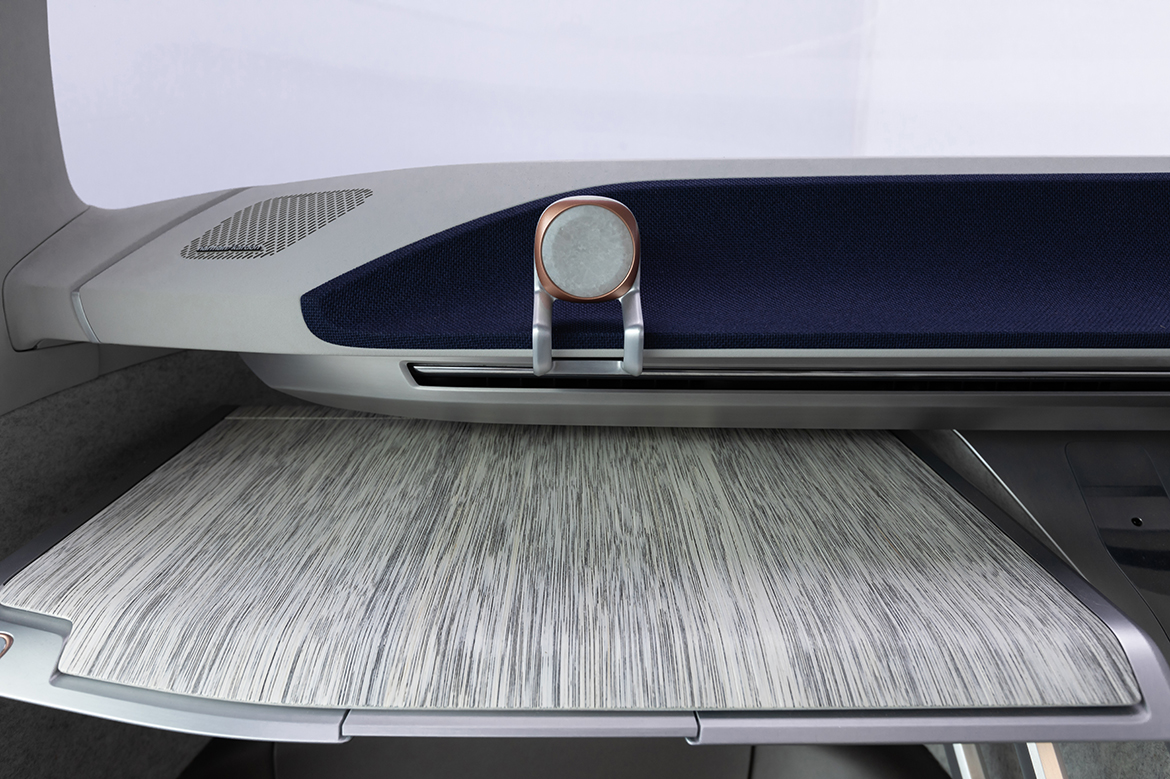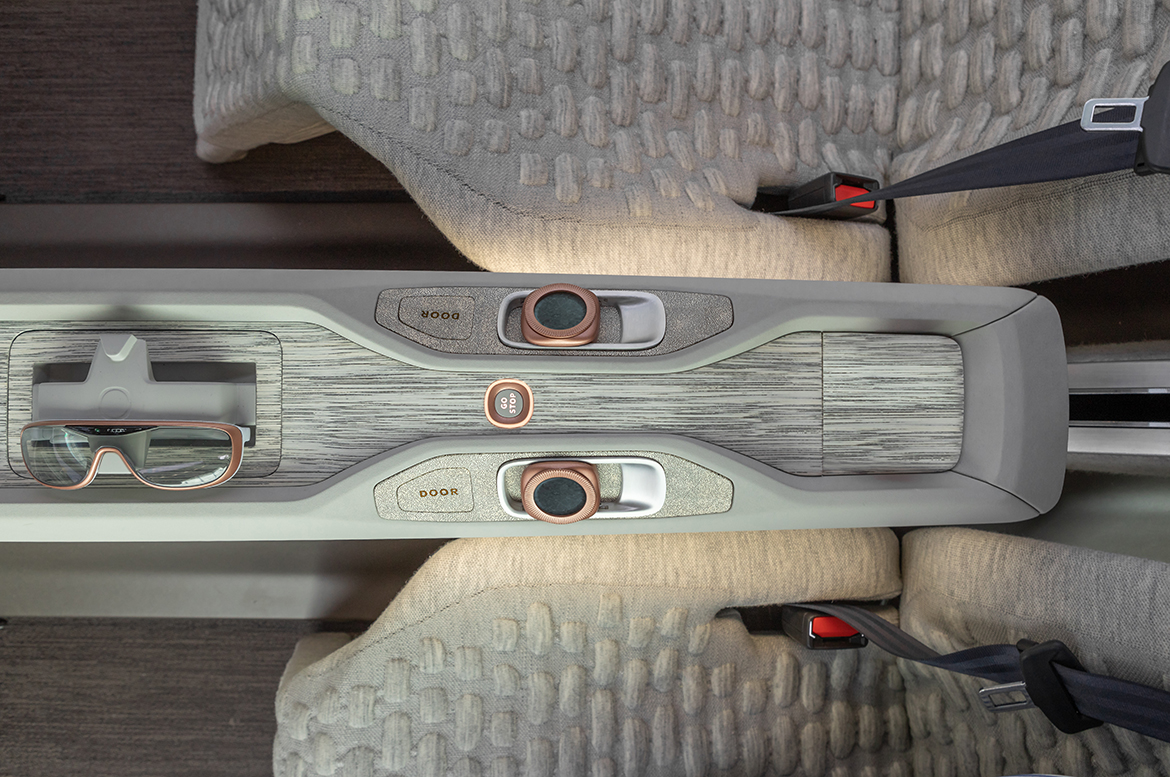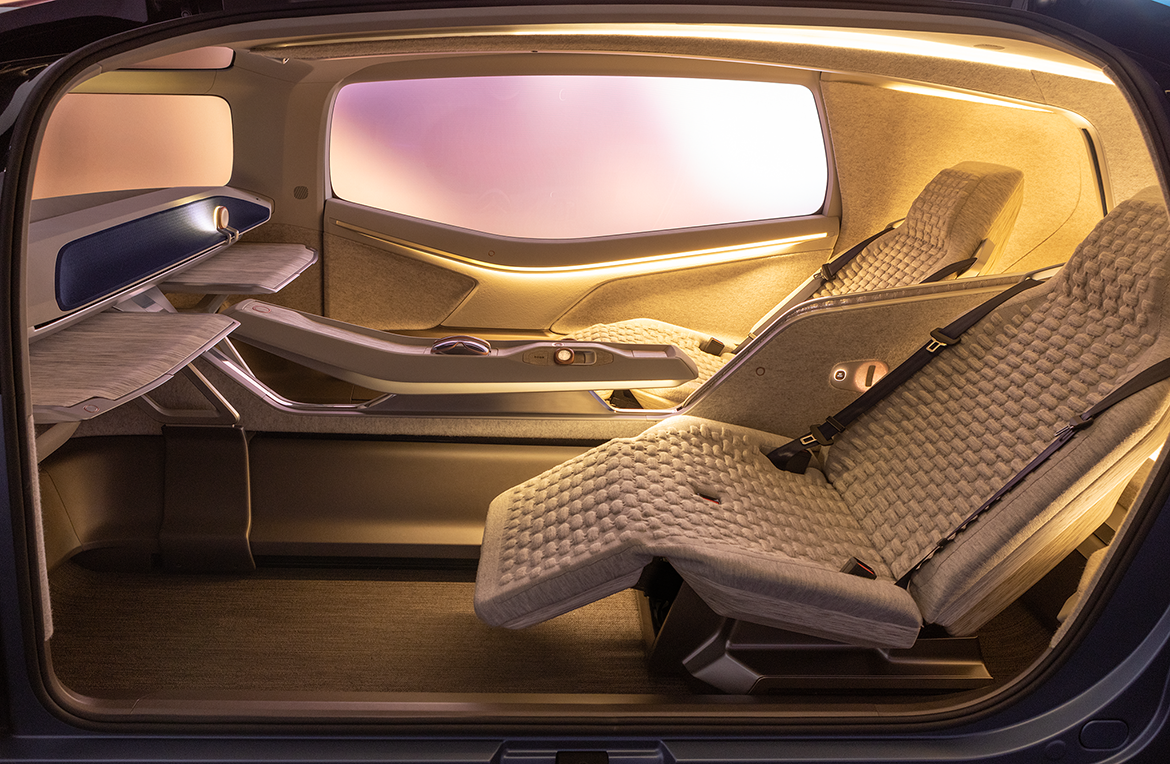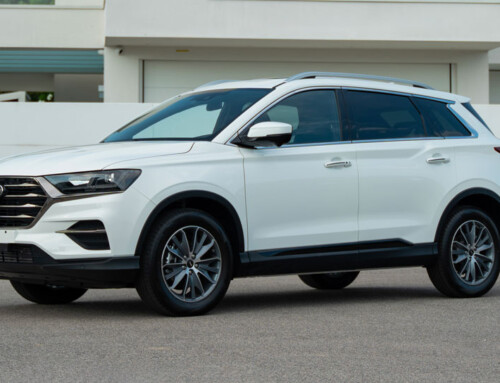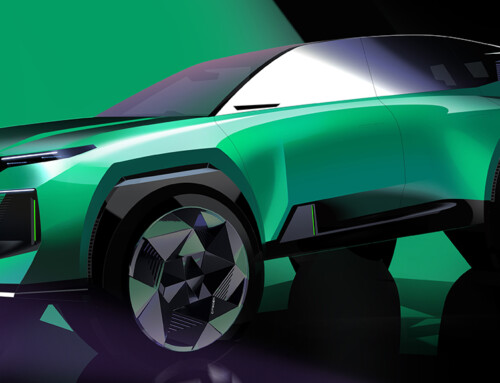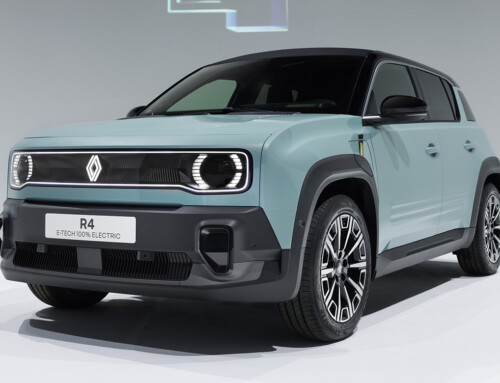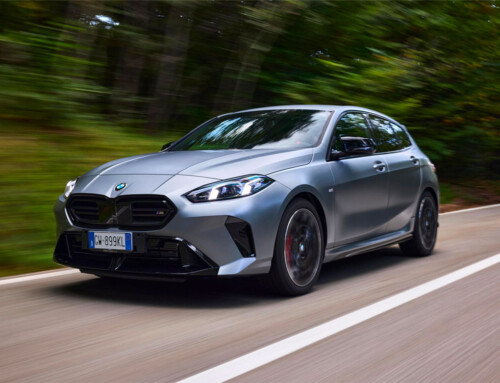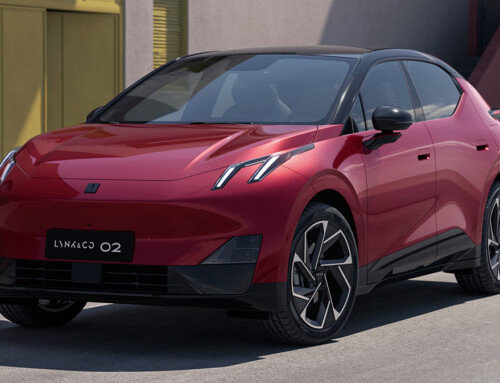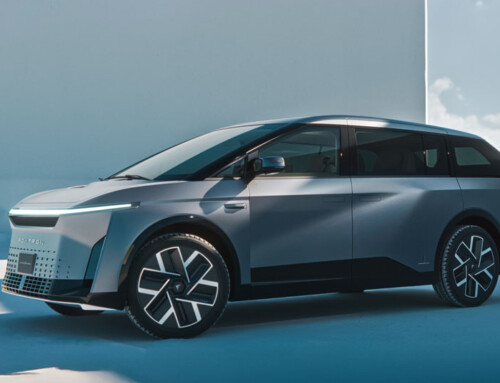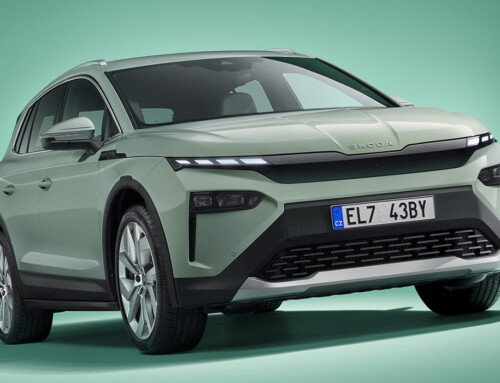An autonomous vehicle halfway between a saloon and a minivan for travelling into the future in total comfort, designed as a space to work, relax and even sleep while travelling, just like during a long business class flight. It is called the Gen.Travel (full design story in the next issue of Auto&Design) and is a concept car developed by the Volkswagen Group’s style centre in Potsdam (Future Center Europe) headed by Peter Wouda, under the superivsion of Klaus Zyciora, head of design for the Volkswagen Group. “Gen.Travel gives us a glimpse into the journey of the future by showing what autonomous driving will look like. This concept embodies a visionary and distinctive design that also recalls great masterpieces of the past such as Eduard Rupert’s Tropfenwagen of 1921,’ says Klaus Zyciora.
The Gen.Travel has a modular interior concept that can be customised for each journey and booked according to the ‘Mobility-as-a-Service’ idea. Depending on the configuration, the cabin takes on a different layout and can accommodate up to four people. In Business mode, designed for business travel, there are four comfortable seats and a table in the middle, while in Family the table disappears and the seats are modular. Among the most important innovations is the night mode, which transforms the armchairs into two beds that can assume a completely horizontal position. Dynamic lighting inside the passenger compartment avoids the danger of motion sickness (motion sickness).
The car’s lighting system also influences melatonin production to help passengers fall asleep and wake up naturally, while all HMI (human-machine interface) elements are produced using sustainable materials, combined with recycled or natural materials. The futuristic exterior is divided into two parts: the transparent glass cabin is incorporated in the lower part and the waistline is very low to maximise the view from inside.
For maximum comfort, Gen.Travel has eABC (Active Body Control electric suspension) that calculates vertical and lateral movements such as acceleration, braking or turning in advance and optimises the driving style and trajectory accordingly. Artificial intelligence (AI) and so-called platooning – fully autonomous driving in convoys – are used to further increase the range for long-distance journeys.


